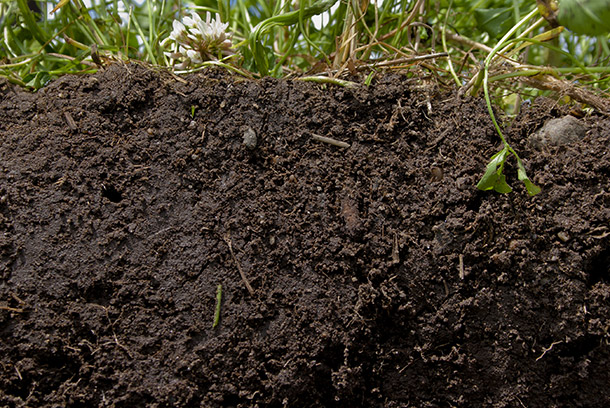
From your trees point of view the main ingredient in the environment is the soil. Soil takes decades, and in some cases, centuries to develop into a rich and nutrient dense mixture capable of sustaining life. Every plant that grows in and dies in the soil aids in the nutrient content of it. Soil is made up of a delicate balance of different living microscopic organisms, some of them are fungi or bacteria. Earth worms are even an important component to nutrient dense soil because they leave routes through the soil that water and air can travel through.
Soil can be very different from place to place. Just like with any other type of plants, various trees like specific types of soil to grow in. Before you set about planting trees on your property, you should do a little research in order to find out if the soil is in the optimal condition for planting trees. Not only do the nutrients in the soil need to be right, the soil itself needs to be dense enough to hold water for trees to use. The soil will be the habitat for many organisms that will help your trees to grow healthy.
Soil Characteristics
There are several general types of soil with different properties that make them up. These properties determine how well the soil holds together, how well it holds moisture, nutrients, and air. These different types of soil include:
- Sandy soil – this type of soil has looser particles which allow air to penetrate, but it does not hold moisture very well and is usually poor in nutrients.
- Clay soil – Which has smaller pores between particles which doesn’t allow much air in, but holds water very well and is generally high in nutrients.
- Sandy, Clay soil – This type is a combination of the first two. This type of soil allows air to get in somewhat, is compact enough to hold onto moisture well while being nutrient rich.
Soil conditions to watch out for
Once you can identify the type of soil you are dealing with, it will give you an idea as to what types of issues that may arise when planting trees. Some soil related issues include:
Drainage – Soil that holds onto water can be good during drought conditions, however, in climates where water isn’t a problem it can cause trees to drown. While the ground around and under trees can hold too much water, it can cause the ground to saturate and that can prevent the tree roots systems from getting air.
To fix this issue you can add some sandy type soil to the mix in order to help it drain better. You might use organic material like mulch or other composted material in order to mix in.
Compaction – There are a few things that can cause soil compaction. When soil has a high clay content it will become compacted much easier. It can happen as the result of high foot traffic, yard machinery and driving over it. Generally it will happen around trees and over their root systems. When it occurs it compresses the soil and eliminates the air in between the particles. This causes water to pool on top of the soil and saturate the ground.
To fix this issue try adding mulch or other organic material into the soil in order for it to create small pockets of air in the soil. You may also use a core aerator to help add a looser texture to the soil. Alternately you can use a tiller to loosen it, and never work with the soil when it is wet.
Chemical Properties
As well as these physical soil properties, there can also be chemical imbalances that can cause trees to have difficulty growing. All soil has a specific pH balance, and it is important to know what it is. It is recommended that you be prepared to take soil samples for testing in order to make sure that the soil is balanced and has good nutrient content. If you are not sure how to take samples, you can call in a tree service expert / arborist to help take the appropriate samples to help determine the issues with the trees.
The more acquainted you are with the soil that your trees are living in, the easier it will be to keep them healthy. By maintaining healthy trees it can make it easier for you to notice when there is an issue with them. When you are forewarned about potential problems it can help you prevent them from happening.
www.thetreecareguide.com has additional tree care, pruning, and planting information to help you care for your trees and lawn.